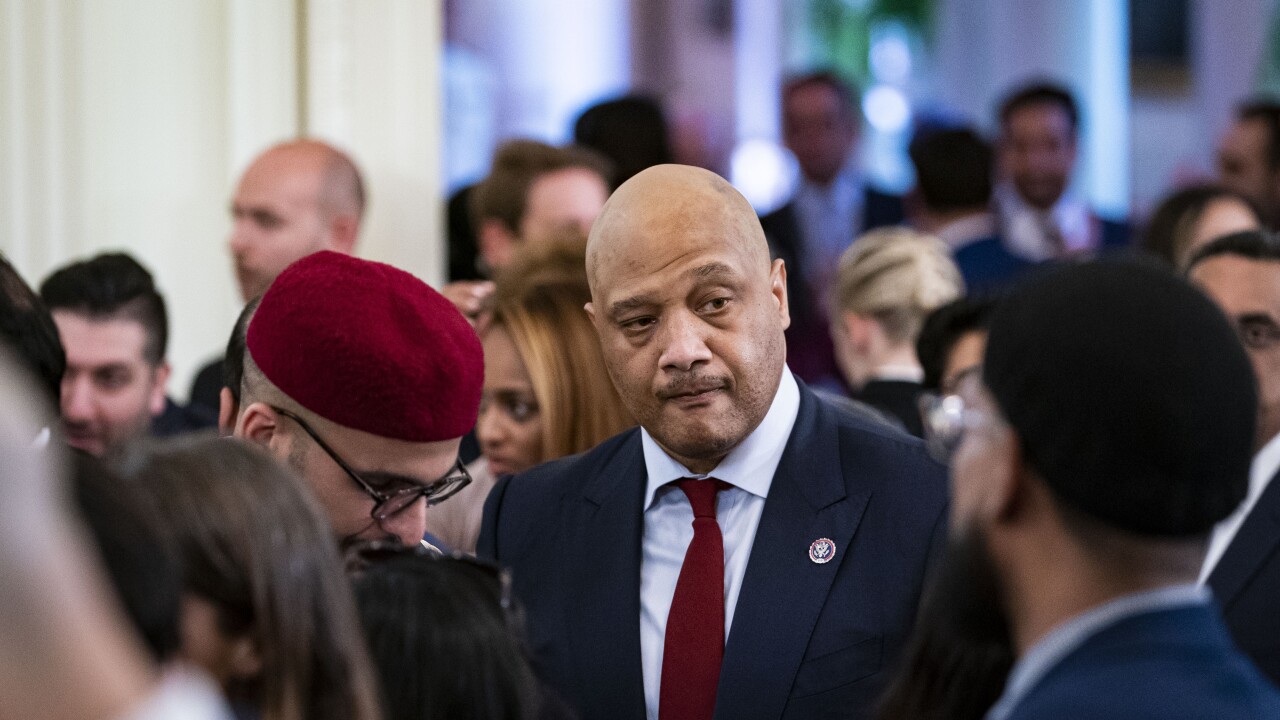
On Monday, City Council members joined transportation and other civic activists and business leaders on the steps of New York City Hall to discuss the need to fix aging regional infrastructure.
Visible to the right was a massive midday traffic jam on the Brooklyn Bridge -- a convenient metaphor for the state of transportation planning in the region.
At the gathering, arranged by the think tank Center for an Urban Future, people cited the need for alternative funding for fixing everything in the region from trains to bridges to housing.
"At a time when too much of the city's essential infrastructure remains stuck in the 20th century and little help is coming from Washington, additional resources and new ideas are needed," said the center's executive director, Jonathan Bowles. The center's "Caution Ahead" report last year warned that $47 billion was necessary over five years to bring all facets of city and regional infrastructure, transit included, to a state of good repair.
Innovative ideas include congestion pricing - the MoveNY initiative championed by engineer and former city transportation commissioner "Gridlock Sam" Schwartz. It would impose electronic tolling on vehicles entering Manhattan south of 60th Street and toll now-free East River bridges while lessening tolls on other bridges that connect the city's outer boroughs.
Schwartz has said the move could bring in about $1.5 billion annually, with $1.1 billion for mass transit and the balance for bridges and roads.
"I'm a strong supporter of the
Of course, the decision is in state hands, not the city's.
"It's not what we do," said Lander. "It's what Albany does."
Gov. Andrew Cuomo has said little about the MoveNY proposal.
"It would seem to me that there's a lot of merit to that, but it's not getting nearly enough traction," Michael Sweeney, senior vice president and New York metro district leader for transportation engineering firm HNTB, said of the Schwartz plan.
That the congestion pricing and toll-swap overhaul is closely aligned with Schwartz could explain Cuomo's reticence.
"The governor likes to publicize things when they're his ideas," said Sweeney. "He could just take the MoveNY plan, tweak it and give it a new name."
City vs. state is just one frictional dynamic at play in regional transportation overhaul.
Recently, New Jersey Gov. Chris Christie has opposed an additional tunnel under the Hudson River to Manhattan. Regional commuter lines Metro-North Railroad, Long Island Rail Road - both Metropolitan Transportation Authority units now -- and NJ Transit have had histories of territorial fights, notably Metro-North's objections to an LIRR presence in Grand Central Terminal. The MTA's East Side access megaproject is finally addressing the latter.
"There are a lot of jurisdictional things," said Sweeney. "Triborough Bridge and Tunnel Authority was the invention of Robert Moses. Why does the MTA toll some of bridges at such a high rate while others are free? Why is the MTA, which is primarily for New York City, a state-run agency?"
Transit activist Murray Bodin of Hartsdale, N.Y., a frequent public speaker at MTA and other agency board meetings, said leaders today are stuck unwinding the work of Moses.
"How do you undo the cultural thinking that's fossilized?," he said.
Connecticut Gov. Dannel Malloy, who has a 30-year, $100 billion transportation funding proposal on the table, said at last month's Regional Plan Association annual assembly that his state is "kind of a stepchild" in regional transportation planning.
"The only thing I ever get invited to is the RPA and the governor of New Jersey and I haven't had the best relationship, either," said Malloy, a former Stamford mayor just beginning his second term as governor.
According to Anthony Coscia, chair of the Amtrak Board of Directors, institutional changes in the tri-state region are essential.
"We have got to find a paradigm that recognizes that political boundaries that were created 200 years ago are irrelevant in the society we live in today," he said at last month's annual RPA assembly in midtown Manhattan. "Somebody whose life crosses all these borders virtually or in reality, all those borders mean nothing."
Two weeks ago, Amtrak, MTA, NJ Transit and the Regional Plan Association discussed trans-Hudson transportation capacity, notably the Amtrak-sponsored Gateway trans-Hudson rail tunnel, intended to double the flow of Amtrak and NJ Transit trains into Penn Station. Topics included innovative infrastructure funding sources, financing techniques, public-private partnerships and tax-increment financing.
"People talk at all levels. Talk is talk. Action is another," said Sweeney. "They need to come out of that with an action plan."





